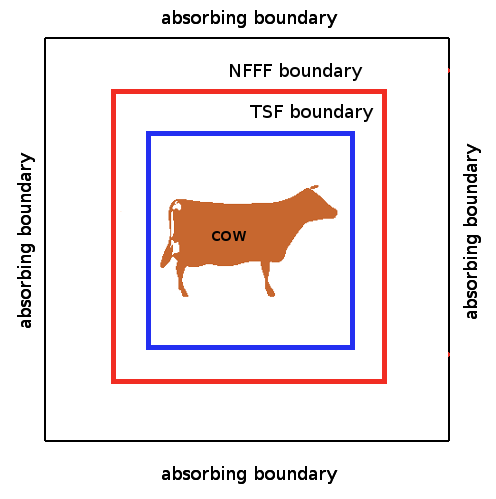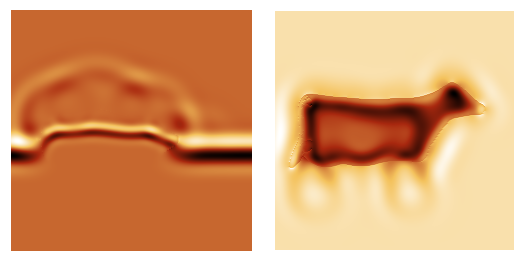Tutorial:
FDTD & GPU
Yee's algorithm
Sources
Materials
Boundary conditions
Near-to far field
Application notes
Application note: Cow detected by radar
This example shows possibilities of using tetrahedral mesh as GSvit input. It shows interaction of a short plane wave pulse (with frequency in UHF radar range) with weakly absorbing cow. Note that even if flying cow use for military purposes could be considered improbable, it was already reported. Geometry used in this example was based upon model provided courtesy of MPII by the AIM@SHAPE Shape Repository.
|
Image on the right shows a scheme of the computational volume used for the simulation. A normally incident plane wave with chosen wavelength (here 30 cm) was entered into computational volume using Total/Scattered field (TSF) approach. A weakly absorbing cow was originally obtained in .off format from AIM@SHAPE Shape Repository. This was used to create tetrahedral mesh using Tetgen. Resulting files (.node and .ele) were used as input to GSvit. Near-field to far-field (NFFF) algorithm was used to detect scattering response from the cow. |
 |
|
The cow was hit by an electromagnetic wave from side. A snapshot of simulation (pulse plane wave just entering the cow, top and side view) and resulting far field response in backward direction are shown below. Note that no special attention was made to do anything (e.g. field intensity) physically reasonable as we have no experimental data for comparison anyway. |
 |
 |
The same approach can be used for any data that can be imported into Tetgen (.off, .ply, .stl, .mesh). Such files can be produced e.g. by Blender or can be downloaded from different 3D shape repositories.
(c) Petr Klapetek, 2013
